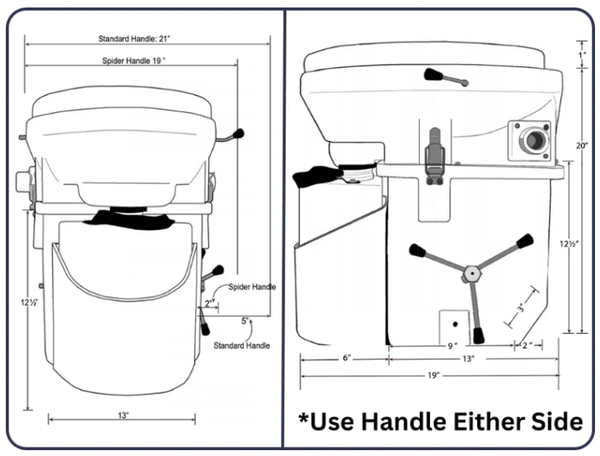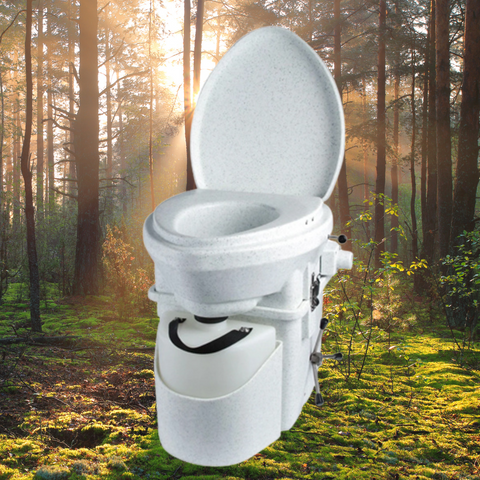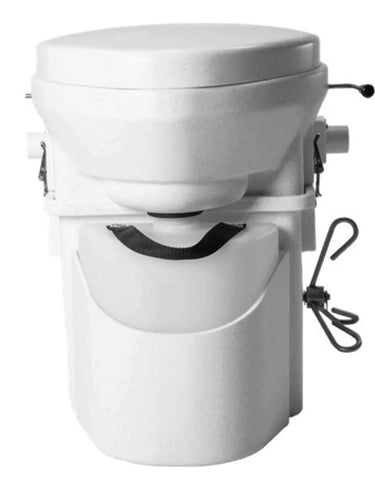Your Cart is Empty
Call, Text or Chat Mon-Friday 10AM-5PM CST : 1-844-WILDOAK
Menu
-
- Deals & Promos
- Homesteading
- Living Off The Grid
- Off Grid Toilet
- Composting Toilets
- Incinerating Toilet
- Chicken Coops
- Greenhouses
- DIY Shed Kits
- Barndominium Kit
- Garage Kits
- Poultry Processing
- Dog Kennels
- BeeKeeping
- EMP & Signal Protection
- Emergency Food Kits
- Freeze Dryers
- Solar Generators, Panels and Batteries
- Solar Fridge & Freezers
- Propane Wall Heater
- Water Filtration
- Coolers and Cooking
- Gazebos
- Portable Sauna
- Camping Cot
- Hunting Blind
- Canvas Tents
- Prepping
- Overlanding Gear
- Composting Toilets
- Solar Generators
- Brands
- Chicken Coop Brands
- Composting Toilet Brands
- Solar Brands
- Food Storage Brands
- Freeze Dryer Brands
- Water Filtration Brands
- Incinerating Toilet
- Dry Flush Toilet Brands
- Waterless Toilet Brands
- Heater Brands
- EMP Shield Brands
- Tent Brands
- Cot Brands
- Cooler Brands
- Stove & Grill Brands
- Dog Kennels
- Greenhouse & Gazebo Brands
- Portable Saunas
- DIY Shed Kits
- About Us
- Resource Center
- The Ultimate Prepper & Emergency Survival Blog - Includes Free eBook
- Beginners Guide to Living off The Grid - Includes Free eBook
- Building Your Own Emergency Food Supply
- Best Survival Food to Be Prepared for Anything
- Berkey Lab Tests & Certifications
- Federal Solar Tax Credit - What You Need to Know
- BLOG
-
- 1-844-945-3625
- Login

Call, Text or Chat Mon-Friday 10AM-5PM CST : 1-844-WILDOAK
Nature's Head Composting Toilet Review: Hearing from Customers & Industry Experts
by Hailey Funk 10 min read
Nature's Head Composting Toilet Review
Wondering how effective the Nature’s Head composting toilet is? In this Nature’s Head composting toilet review, we’ll cut through the fluff and explore whether this system can confidently manage odors and make off-grid living seamless. From installation nuances to everyday use, we go beyond the hype to reveal what really matters to users like you – performance and practicality.

Key Takeaways
-
Nature’s Head Composting Toilet manages waste eco-consciously, separating liquid and solid waste to prevent sewage and odors, and it is user-friendly with features like a hand crank for stirring compost in the solids bin and an easy to empty liquids bottle.
-
It requires minimal maintenance, including emptying the liquids bottle, ensuring the correct moisture levels for your coco coir, spraying the toilet bowl with a water and vinegar solution after each use, and emptying the solids bin after roughly 60-80 uses.
-
It's an environmentally friendly option, conserving water and reducing pollution with its composting process, although it may have limitations in colder climates and has an initial upfront cost.
Understanding the Nature's Head Composting Toilet

Stepping into the future of waste handling, Nature’s Head Composting Toilet offers the following features:
-
It manages human waste eco-consciously by separating liquid and solid waste, preventing them from mixing and producing sewage and associated odors.
-
It operates odor-free, providing users with a faint earthy smell from the composting material, indicative of the natural composting process.
-
It is user-friendly, featuring a hand crank for stirring compost, an easy-to-detach liquid waste bottle, and a compact size that fits comfortably into any living space.
A closer examination of this composting toilet reveals the fundamental role played by waste separation. This separation not only controls odors but also facilitates proper composting. It uses a built-in urine separator, guiding liquids into a separate container and solids into the composting compartment. This separation makes sure the composting process happens smoothly and effectively in the composting chamber.
Separation of Waste
The Nature’s Head Composting Toilet works super efficiently due to its urine separator, which directs liquids and solids into different compartments (the urine bucket and the solids compartment). If urine mixes with human waste in the solids compartment it creates sewage (and an unwanted sewage smell) and prevent composting from taking place, so the separation of the two is a pretty crucial piece of the puzzle.
Users are advised to sit while using the Nature’s Head to make sure you're getting efficient separation of liquid and solid waste. Stand-up usage can lead to a mix-up of the waste material, which is a no-go in the world of composting toilets.
Composting Materials
The composting material forms the core of the Nature’s Head system. Traditional composting materials like sphagnum peat moss and sustainable options like coconut coir are commonly used. Coconut coir, in particular, is valued for its sustainability and ease of storage. It comes in a compressed form that expands with water, making it a practical choice for many users.
Even though peat moss is a more traditional option, coconut coir has gained popularity due to its renewable nature and space-saving storage. Users have reported effective composting in various climates and seasons with coconut fiber, highlighting its reliable performance. For effective composting, it’s crucial to keep the composting material damp and crumbly, avoiding excessive wetness. And don’t get tempted to add vegetable scraps into the solids bin; only peat moss or coconut coir should be used to avoid slowing down the composting process and causing premature filling of the bin.
Installation and Setup Guide

Once you have your Nature’s Head Composting Toilet, the next step is to get it operational. Your system comes with two L-brackets and mounting screws for wood floors. If your floor is made of a different material, you might need alternative bolts. Ventilation setup can be achieved through various methods, including mushroom vents for cabin side or roof venting. PVC piping is recommended for permanent structures, and additional lengths may be required for specific setups.
As for the power setup, the it can be powered by a 12-volt system, with parts included, or by 110-volt house power with a wall transformer which can be added on to your purchase. Using the right fuses for the 12-volt system is of utmost importance. If you have any wiring uncertainties, it’s best to check FAQs or consult an electrician. Lastly, ensure sufficient clearance for lid and liquid tank removal, enough space for hose connection, and an agitator handle. If you’re dealing with confined spaces, the spider handle can be used to reduce the unit’s width.
Ventilation Requirements

Next, we’ll discuss the role of ventilation. Proper ventilation is crucial for odor control and enhancing the composting process in the Nature’s Head Composting Toilet. The small fan, which should run continuously, especially when it's frequently used, pulls air from the solid tank to the exterior, evacuating any unpleasant smell and aiding in faster composting.
If it starts to emit a nasty smell, the fan is the first thing you should check. Ensuring the fan is working and has a stable power supply can solve the problem, as the fan plays a vital role in evaporating liquids and keeping odors at bay. For maintaining efficient ventilation, the fan should be cleaned every other time the solid compartment is emptied to prevent dust accumulation that can impede airflow. Cleaning the fan is pretty straightforward: remove it from the side, clean the plastic pieces and filter, and ensure it is completely dry before reassembly.
And don’t forget to install a mesh fabric or screen over the vent opening to prevent insects from entering the composting toilet system.
Power Consumption

One of the many great things about the Nature’s Head Composting Toilet is its minimal power consumption. The 12-volt fan for ventilation draws less than 2 amp hours over a 24-hour period and only 0.1 amps during operation. This equates to a power consumption of approximately 1.7 amp hours per day.
The fan can also be powered by a solar battery, providing an eco-friendly power option. If you have a 110-volt power source available, you can use a transformer or wall adapter to convert it to the required 12 volts. For safety, the fan should be connected to a fused circuit with a fuse rating between 2 to 5 amps for the 12-volt system, ensuring protection against electrical overload. If your 12-volt system is not protected, such as in direct connections to a battery, a fuse holder and fuse are included to safeguard the electrical setup.
Day-to-Day Use and Maintenance

Having understood the setup, it’s time to delve into the daily usage and upkeep of the Nature’s Head Composting Toilet. Regular cleaning is needed to maintain your toilet. This involves unscrewing the bolts, taking the unit outside, and spraying it down with a preferred cleaner.
Maintaining the right moisture levels in the compost is key to preventing odors. If it’s wet or there’s an odor problem, it could be due to urine contamination, which requires immediate attention. A vinegar/water mixture after use helps keep the bowl clean and urine odors in check. For persistent smells, white vinegar or dish soap can be added to the urine container.
Regular maintenance includes:
-
Properly managing compost moisture levels by adding more coco coir or water if too dry or wet
-
Spinning the agitator handle after use to mix waste with composting medium like coco coir
-
Addressing excess wetness from vomiting or diarrhea by adding dry compost medium
-
Depositing toilet paper in the solids container (thinner varieties decompose faster)
Emptying Process
When it comes to emptying the toilet, the composting section needs to be emptied after approximately 60 to 80 uses, which often ends up being about every three weeks for two full-time users. The urine bottle holding 2.2 gallons generally requires emptying every 3-4 days for two people. It’s best to empty it before it appears full to prevent odors and overflow. You can also pick up an extra liquids bottle to have on hand and just cap the full one and swap it out if you're on the road and need some extra time to empty it.
The solids container should be emptied when it's approximately 3/4 full. Ideally, you could use a compostable bag for disposal, instead of a plastic bag. Users can bang on the toilet to release clumps before carefully removing the bag. The solid waste can then be placed in a proper compost bin to fully decompose or in a conventional dumpster if already fully composted.
If a sewage odor develops, ensure that:
-
Urine is deposited only into the designated liquids bottle and for extra odor control add vinegar to the urine tank.
-
If the compost is too dry, simply add a bit of water and let it absorb before agitating.
-
For excess moisture, add more composting material like coco coir or peat moss.
Cleaning Techniques
Keeping your Nature’s Head Toilet clean is as simple as:
-
Using a spray of water or a small spray bottle of water and white vinegar for routine freshening of the toilet bowl
-
Enhancing the cleaning solution with essential oils or orange peels for better scent
For cleaning dried-on matter or more demanding cleaning tasks, a paper towel moistened with a 1:1 solution of vinegar and water should be used. Remember, harsh cleaners must be avoided to preserve the composting process.
Benefits and Limitations

The Nature’s Head Toilet brings benefits to both its users and the environment. It’s significant benefits include conserving water, effectively composting waste, and avoiding plumbing in your off-grid set up, tiny house, van, or RV.
However, it’s not without its challenges. The toilet’s composting process can be slowed down in colder climates. Plus, it involves an initial investment cost and the need for occasionally purchasing composting material. You also need to empty it out every now and then, compared to a traditional flush toilet that you can just, well, flush. However, users generally find the Nature’s Head Composting Toilet to be worth the investment, appreciating its effective functionality, low maintenance requirements, mobility and odor control.
Water Conservation
One of the standout benefits of the Nature’s Head composting toilet is its significant water conservation. The waterless system (or dry toilet) not only conserves valuable water resources but is also super beneficial in areas without dependable water supplies. When utilizing a Nature’s Head composting toilet, one person can conserve more than 6600 gallons (24,984 liters) of water every year. This environmentally friendly option helps to significantly reduce water usage. That’s a substantial water conservation potential that can’t be overlooked.
Also, the eco-friendly operation of the Nature’s Head Composting Toilet translates into a reduction of the demand on water treatment facilities and a minimized environmental footprint due to less water usage.
Challenges and Drawbacks
Every rose has its thorns, and the Nature’s Head Composting Toilet is no exception. Composting functions optimally at temperatures above 55 degrees Fahrenheit, and the process slows down or becomes dormant in freezing temperatures. This means that if you’re living in a colder climate, you might face some challenges in the composting process if you're unable to warm it up.
The upfront cost of a composting toilet like Nature’s Head can be higher than that of a regular toilet, potentially making it a significant up front investment. There is a learning curve associated with using and maintaining a composting toilet, but the environmental benefits and the potential savings in the long run make it a worthwhile investment.
Comparing Nature's Head with Other Composting Toilets

Before making a decision, it’s beneficial to consider other alternatives. When it comes to composting toilets, there are a few alternatives to Nature’s Head.
Separett
Separett composting toilets originate from Sweden and have been specifically designed to cater to the US market, introducing models like the Villa 9125. One of the standout features of the Separett toilets is their compatibility with various composting bags, enabling users to have flexibility in maintenance and potential cost savings.
Sun-Mar
The Sun-Mar Excel Composting Toilet is designed specifically for residential use, mirroring the capacity and usage patterns of traditional flush toilets. Unlike the Nature’s Head Composting Toilet which requires separation of liquids and solids, the Sun-Mar Excel is built to accommodate both together, simplifying the user experience.
Real-life Experiences and Testimonials

Hearing from actual users provides a wealth of information, and Nature’s Head Composting Toilet users have shared a ton of positive experiences. Here are some examples:
-
Jake & Rita said they were totally satisfied with the Nature's Head's performance and reliability, they emphasized the lack of bad odor even after using it for a long time.
-
Jeffrey C. also praised the toilet for its straightforward maintenance and sturdiness.
-
One user even noted that the toilet survived being run over by a vehicle!
These are just a few of the testimonials that highlight the positive aspects of the Nature’s Head Composting Toilet and its durability.
Installation of the Nature’s Head composting toilet was reported to be simple and smooth by users like Cynthia S. and Bill W., fitting well into different bathroom settings. Users also highlighted the exceptional customer service provided.
Troubleshooting Common Issues
Even with all its advantages, the Nature’s Head toilet bowl may present some common issues, but rest assured, these can be easily fixed. One common issue is excess moisture in the compost, which could signal contamination with urine. In this case, add more dry composting material and turn the agitator handle to improve composting action.
If a user experiences bug infestations, such as fruit flies or gnats, pest control measures need to be taken. Try doing a thorough cleaning of the unit and make sure your vent has a proper screen or mesh to cover the opening so no bugs can get in.
When compost is too dry, causing difficulty in turning the agitator handle, try adding a spray or two of water and agitate it. Keep doing this until the proper moisture levels are met.
Buildup in the liquids bottle can be removed using a solution of detergent and vinegar, ensuring the toilet functions effectively.
To Wrap It Up
The Nature’s Head Composting Toilet is a sustainable waste management solution that is easy to install, simple to use, and incredibly eco-friendly. It offers significant benefits such as water conservation, no plumbing required, efficient composting, and a mobile toilet on the go. While there are some challenges and potential limitations, most users find the benefits far outweigh any drawbacks. Whether you’re looking to reduce your carbon footprint, conserve water, or simply want a reliable and efficient toilet solution for off-grid living, the Nature’s Head Composting Toilet is definitely worth considering.
Frequently Asked Questions
How often do you empty a Nature's Head composting toilet?
You should empty a Nature's Head composting toilet with 2 people using it full time every 3 weeks. The frequency of emptying will vary based on the number of people using it.
Can you put toilet paper in natures head composting toilet?
Yes, you can put toilet paper in a Nature's Head composting toilet, but it's best to use a less substantial brand like marine or RV paper as it will compost more quickly. Enjoy your composting!
Does Nature's Head toilet smell?
No, when working properly, the Nature's Head toilet will have a slight earthy smell. So, it should not produce any unpleasant odors.
What is the best compost for nature's head toilet?
The best compost for your nature's head toilet is either organic sphagnum peat moss or organic coco coir. These materials support the growth of aerobic bacteria, which are essential for odor-free and efficient waste breakdown.
Can I use the Nature's Head toilet in colder climates?
You can use the Nature's Head toilet in colder climates, but keep in mind that composting works best at temperatures above 55 degrees Fahrenheit and may slow down or stop in freezing temperatures.

Check out our videos on what to expect in the box and the run-through of how it works!
Leave a comment
Comments will be approved before showing up.
